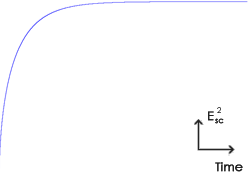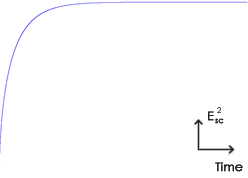Photogeneration




















The most widely used formalism to describe charge photogeneration process in PR polymers is the Onsager model.P.M. Borsenberger and D. S. Weiss, "Organic photoreceptors for xerography" (Marcel Dekker, New York, 1998). In this model, free carriers are assumed to be created by a multistep process. First, a photon is absorbed, which creates a hot localized electron–hole pair. Then, the hot electron loses its kinetic energy by scattering and becomes thermalized at a mean distance r0 from its parent cation, creating a charge-transfer state. The efficiency of this process is described by a primary quantum yield Φ0. Finally, the charge-transfer state either dissociates into a free electron and free hole (which requires overcoming the Coulomb interaction between the electron and a parent cation) or recombines. The photogeneration efficiency Φ is the product of the primary quantum yield Φ0 and the pair dissociation probability, which is electric field- and temperature-dependent.M. Pope and C. E. Swenberg, "Electronic processes in organic crystals and polymers"(Oxford University Press, New York, 1999). Dynamics of the space-charge field Esc (and therefore of photorefractive grating) formation and erasure are typically highly dependent on the charge carrier photogeneration efficiency.O. Ostroverkhova and K. D. Singer, J. Appl. Phys. 92, 1727 (2002).
Use the slider on the right to see how the dynamics of formation of the space-charge field changes with values of S (photogeneration cross-section, which is proportional to the photogeneration efficiency) from 4x10-7 m2/J to 1x10-5 m2/J (typical for photorefractive polymer composites). As the photogeneration cross-section S increases, the space-charge field Esc forms faster. The reason Esc2, and not Esc, is plotted as a function of time on the figure is because diffraction efficiency measured in Four-Wave-Mixing experiments at low applied electric fields E0 is proportional to Esc2 and therefore, dynamics of Esc2 can be directly related to that of experimentally measured diffraction efficiency.